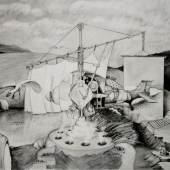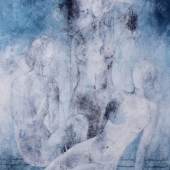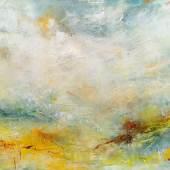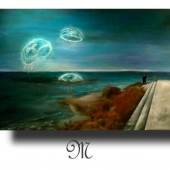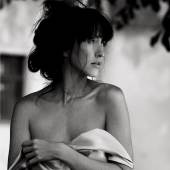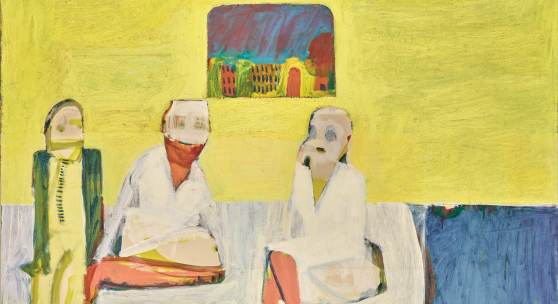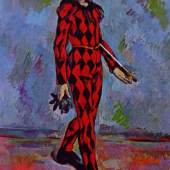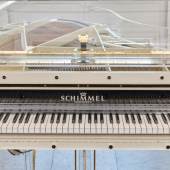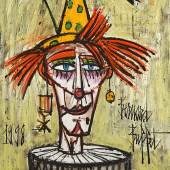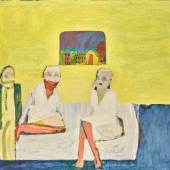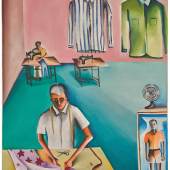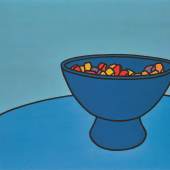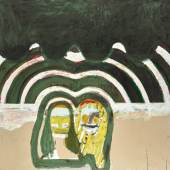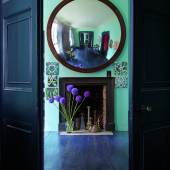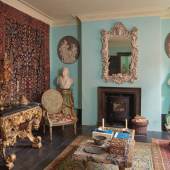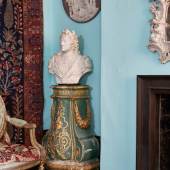Auction
The Personal Collection of Howard Hodgkin & 1,000 Years of Middle Eastern Art
-
Auktion24.10.2017
He collected individual tiles from different periods and countries, spanning Kashan, Iznik and Mughal, and reflecting Hodgkin’s status as one of the greatest colourists of the last half century his concern with colour is evident in his choice of carpets. The intense colour seen in a fragment of the magnificent Von Hirsch carpet for instance, a masterpiece that had been split into four pieces, each of which was sought after by collectors around the world including Hodgkin; or the ‘Portuguese’ carpet fragment which illustrates both the very best of classical Persian dyeing skills and the mastery with which these colours were combined; the Lahore fragments showing just how well Mughal weavers could balance the acidic yellows, shocking pinks and blues of India to glorious effect, as well as including examples of quintessentially Mughal drawing of animals and birds. Textiles appear in the background to some of his prints, for example Moonlight (1980), Bleeding (1981–2) and Mourning (1982). Recurring motifs echoed around the rooms of his home, across a variety of objects of disparate cultural origins. He was fascinated by collage, inlaid items and surface patterns of all kinds: mosaics, renaissance pietra dura, Cosmati, scagliola, cuerda seca, cloisonné and marquetry. It inspired him in 1992, when he designed the giant Banyan tree shadow mural for the British Council building in New Delhi, executed in black Cuddappah stone and white Makrana marble. He was particularly drawn to sculptures as well as reliefs, in wood, in marble and in engravings, which created depth in a shallow space, just as his paintings did. He thought of his paintings as objects, and painted over the three dimensionality of the picture frame to incorporate it as part of the composition. He once commented that he liked to enter a room and find people present in the form of sculptures. Further themes running through the works he collected include elephants and palm trees. Palm trees were perhaps both totemic and a signifier of the exotic, while elephants proved hard for him to resist. He wrote of elephants in 1983: “Perhaps the shifting volume and surface, the loose skin and the obvious structure inside it, the colossal weight which can defy gravity with a leap in the air then sink to the ground in a heap like a mountain, were to the Indian artist what the changing forms and moods of the human body are supposed to have been to the Post-Renaissance European artist.”1 His artist heroes also played their part in his collecting. He loved prints, mezzotints and engravings and was delighted to find that in these media he could own work by Breughel, Hogarth, Piranesi and William Blake. Even items that might seem anomalous are intimately linked to the other objects in his home, as well as to his own paintings, such as a selection of flags. They fascinated him for their symbolism, their stripes and colours that carry the weight of a whole country, and they appear in his paintings In a French Restaurant (1977–9) and Flag (2006–2010), and in the print Put Out More Flags (1992).
-
Diese Suche nach der "reinen Malerei" findet auch in verschiedensten Theorien und...
-
23.01.2025 - 30.01.2025Vom 23. bis 30. Januar 2025 präsentiert Sotheby’s eine außergewöhnliche Online-...
-
06.03.2025Sotheby’s, eines der weltweit führenden Auktionshäuser, beginnt das Jahr 2025 mit einer...
-
24.10.2017Auktion »
Auction in London on 24th October 2017.
